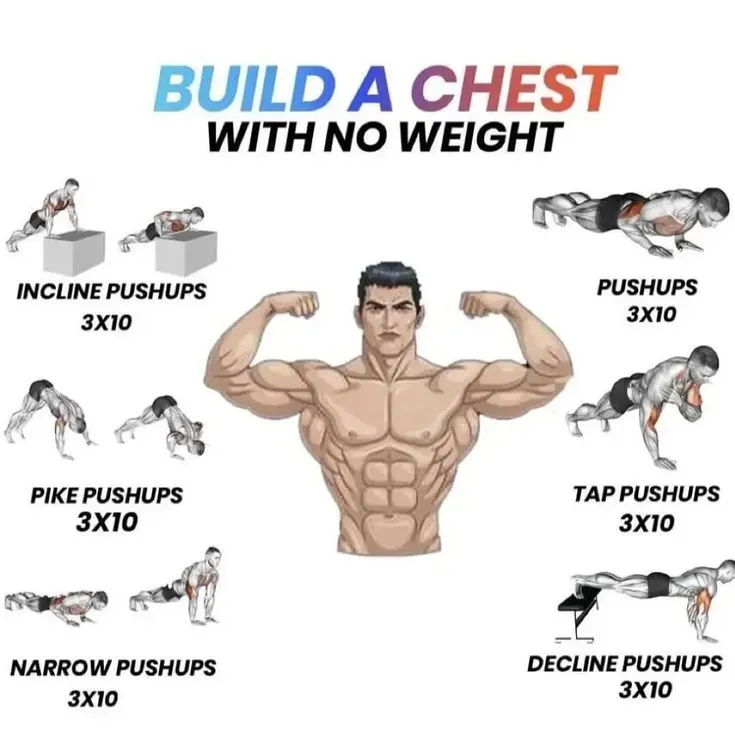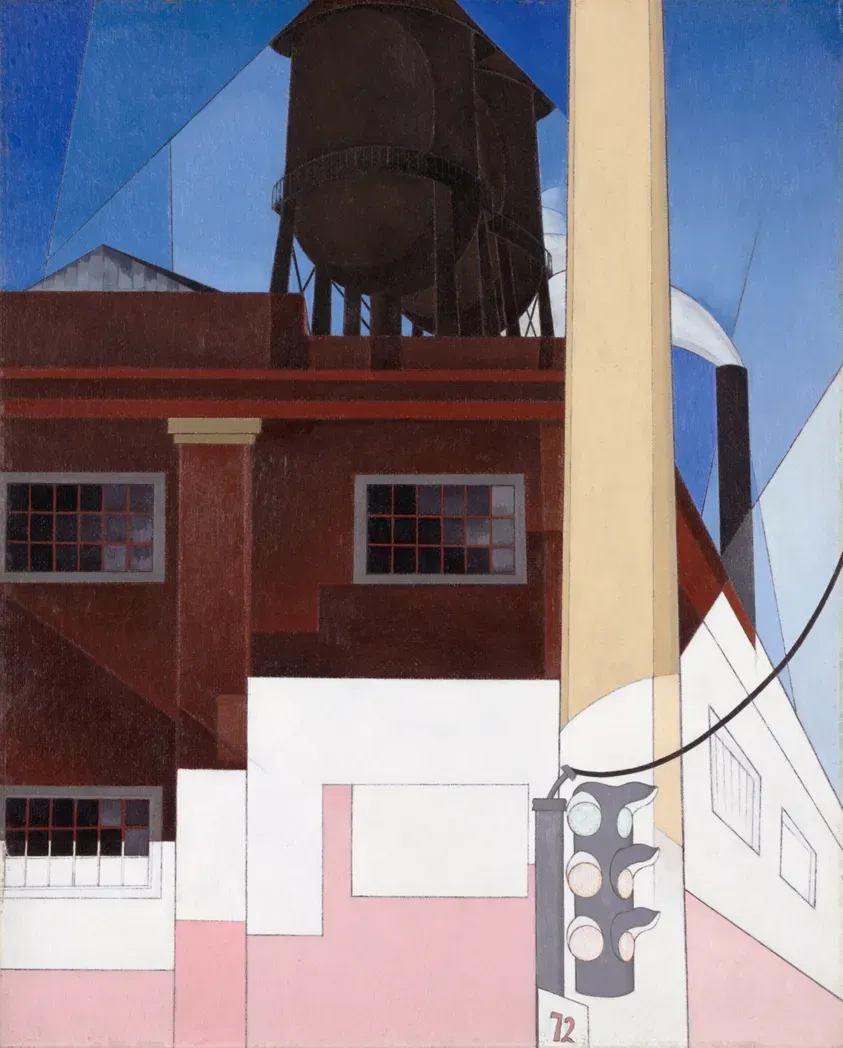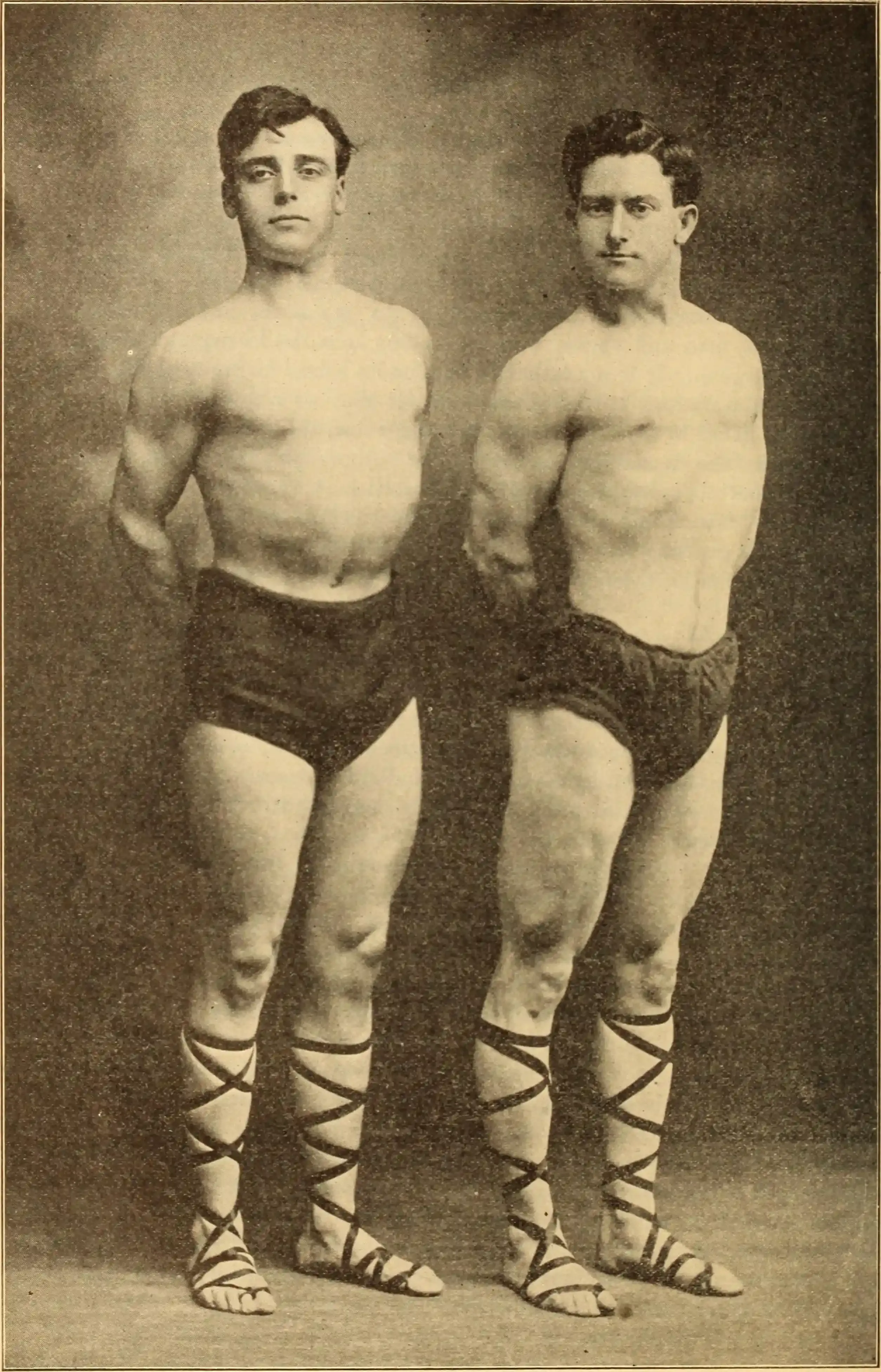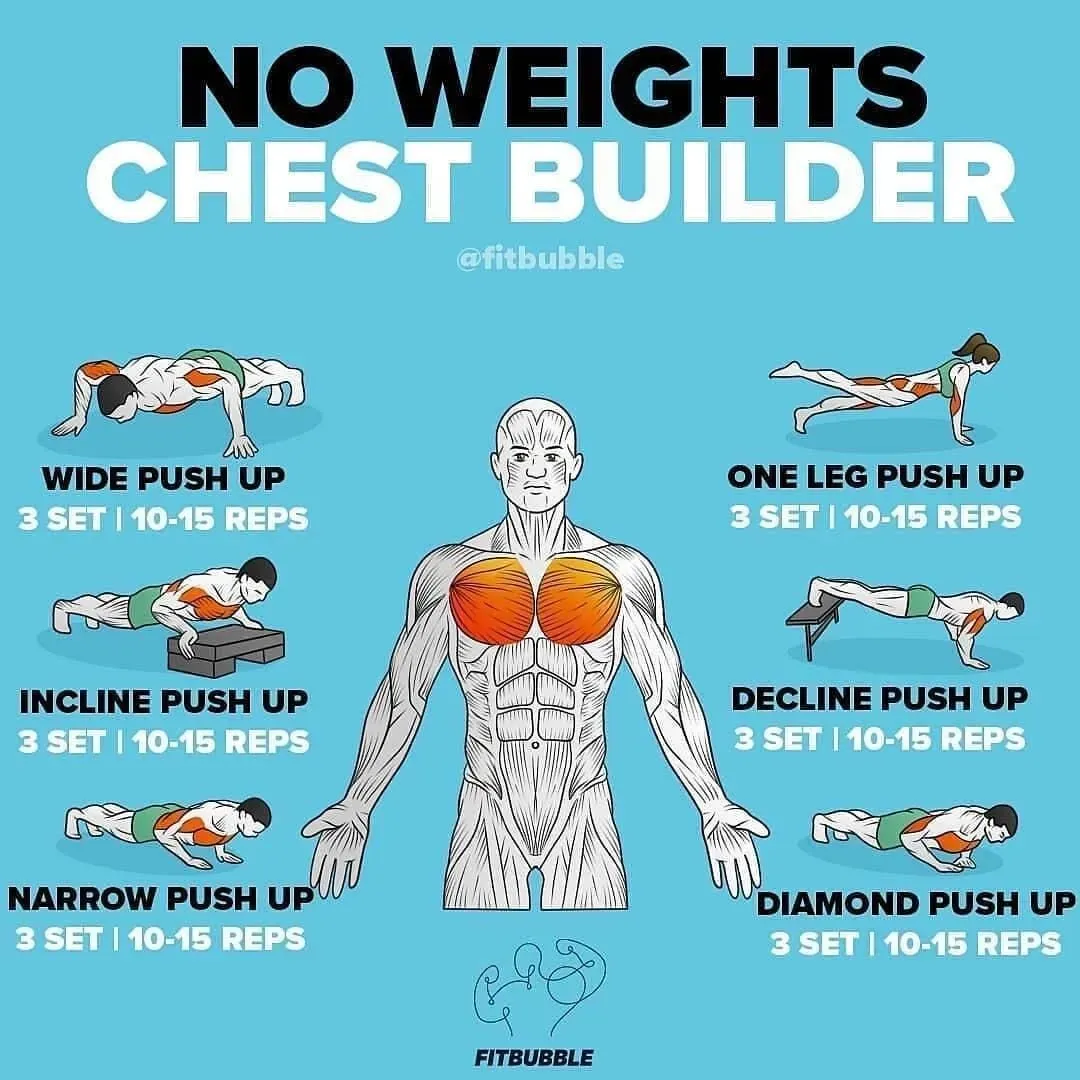Table of Contents
Let's be real. Life gets in the way. Maybe the gym membership is too expensive, or the commute is a nightmare, or perhaps you just prefer the comfort of your own space. Whatever the reason, not having access to weights shouldn't be the excuse holding back your chest development. Forget the fancy machines and loaded barbells for a moment. Building a strong, defined chest is absolutely achievable right where you are, using nothing but your own bodyweight.
Why Chest Exercises at Home No Weights Work

Why Chest Exercises at Home No Weights Work
Bodyweight Builds Real Strength
Look, the idea that you need a bench press loaded with half a ton to build a respectable chest is a myth perpetuated by gym rats who probably skip leg day. Your body doesn't know the difference between pushing against a barbell and pushing against the floor. It just knows resistance. When you perform chest exercises at home no weights, you're using your own body as that resistance. This isn't some fluffy, feel-good workout; it's fundamental, functional strength training. Think about gymnasts; they have incredible upper body strength and often train with just their bodyweight.
More Than Just Pecs: Stability and Control
While your chest muscles (pecs) are the prime movers in many bodyweight exercises like push-ups, you're hitting a lot more than just the glamour muscles. Your shoulders get taxed, your triceps work overtime, and your core has to lock down tighter than a drum to keep your body in a straight line. This integrated movement builds stability and control that isolation exercises often miss. It’s not just about moving a weight; it’s about controlling your entire body through space.
Here's a quick look at what gets involved:
- Pectoralis Major (upper and lower chest)
- Pectoralis Minor (under the major)
- Anterior Deltoids (front of shoulders)
- Triceps Brachii (back of upper arm)
- Serratus Anterior (sides of the rib cage, important for shoulder health)
- Core Muscles (abs, obliques, lower back)
Dispelling the "Not Heavy Enough" Argument
Skeptics will whine that bodyweight isn't heavy enough for growth. That's like saying walking isn't enough to get fit because you're not running a marathon. Progress isn't just about adding weight; it's about increasing intensity. You can make chest exercises at home no weights incredibly challenging by changing leverage, increasing the range of motion, slowing down the tempo, or doing more reps. A standard push-up might be easy for some, but try a one-arm variation or a plyometric clap push-up. Suddenly, the floor feels a lot heavier. You don't need iron to create tension and stimulate muscle fibers.
Mastering the PushUp: The Core of AtHome Chest Workouts

Mastering the PushUp: The Core of AtHome Chest Workouts
The Humble Push-Up: Your Foundation for Strength
Alright, let's talk about the absolute cornerstone of any effective routine for chest exercises at home no weights: the push-up. This isn't just some basic exercise you do until you can lift "real" weight. The standard push-up is a full-body movement that builds foundational strength, stability, and muscle control. It engages your chest, shoulders, triceps, and even your core and legs if you do it right. Think of it as your initiation into bodyweight mastery. If you can't do a solid push-up with good form, trying fancy variations is putting the cart before the horse.
Getting Your Form Dialed In: It Matters More Than Reps
Before you crank out a hundred sloppy reps, let's talk form. This is where many people go wrong and either don't see results or, worse, get injured. Your hands should be roughly shoulder-width apart, maybe slightly wider, fingers pointing forward. Keep your body in a straight line from your head to your heels – no sagging hips or sticking your butt in the air. Lower yourself down until your chest is close to the floor (or touches lightly), keeping your elbows tucked slightly towards your body, not flaring straight out to the sides. Push back up with power, maintaining that straight line. Control the movement, don't just drop and bounce.
Here are a few key form cues:
- Hands shoulder-width apart.
- Body in a straight line (plank position).
- Lower chest towards the floor.
- Elbows slightly tucked.
- Engage your core and glutes.
- Control the descent and ascent.
Advanced Chest Exercises at Home No Weights: Variations to Challenge Yourself

Advanced Chest Exercises at Home No Weights: Variations to Challenge Yourself
Changing Hand Placement: Hitting Different Angles
so you've got the standard push-up locked down. You can crank out reps with good form like it's nothing. Great. That means it's time to stop doing the same thing and expect different results. The floor is still your friend, but we're going to make it a tougher friend. One of the easiest ways to increase the challenge and hit your chest from slightly different angles is by changing where you put your hands. Bring them closer together, and you shift more load to the triceps and inner chest. Spread them wider than shoulder-width, and you emphasize the outer chest more. It's a simple tweak, but it makes a difference.
Playing with Leverage and Stability: Making it Harder
Once hand placement feels easy, start messing with the leverage. Elevating your feet on a chair or couch creates a decline push-up, mimicking a decline bench press and hammering the lower chest. Elevating your hands (like on a counter or table) is an incline push-up, easier than standard and great for beginners or high reps, but less challenging for the advanced. To really ramp up the difficulty, try off-set push-ups, where one hand is slightly ahead or to the side of the other, forcing one side of your chest to work harder. Then there are one-arm push-up progressions – start with your hand on an elevated surface, gradually moving lower until you can do them on the floor. This isn't just strength; it demands serious core stability.
- Diamond Push-ups: Hands close together, thumbs and index fingers touching (hits inner chest/triceps).
- Wide Push-ups: Hands wider than shoulder-width (emphasizes outer chest).
- Decline Push-ups: Feet elevated on a stable surface (targets lower chest).
- Incline Push-ups: Hands elevated on a stable surface (easier variation, good for high reps).
- Off-set Push-ups: One hand forward, one back, or one hand higher (works sides unevenly).
- Archer Push-ups: One arm extends straight out to the side as you lower on the other (advanced, builds to one-arm).
Explosive Power: Adding Plyometrics
Ready to add some bounce? Plyometric push-ups aren't just for showing off (though they look cool). They train explosive power in your chest, shoulders, and triceps. The simplest variation is the clap push-up: push up with enough force for your hands to leave the floor and clap quickly before landing. You can also do them without the clap, just focusing on getting your hands off the ground. For a real challenge, try elevating your hands on small stacks of books or platforms and pushing up explosively to land on the floor, then pushing back up to the platforms. This builds power and strength simultaneously, taking your chest exercises at home no weights to a whole new level of intensity.
Form, Progress, and Consistency for AtHome Chest Gains

Form, Progress, and Consistency for AtHome Chest Gains
Why Sticking to Good Form is Non-Negotiable
so you've got a handle on the basic push-up and maybe even tried a few variations. That's great. But listen, none of it matters if your form is sloppy. Seriously. Grinding out ugly reps where your back is arched like a scared cat or your hips are sagging towards the floor isn't building muscle; it's building a one-way ticket to injury town. Proper form ensures you're actually targeting the chest, shoulders, and triceps effectively, creating the tension needed for growth. It also protects your joints. Think of it as the foundation. You wouldn't build a house on shaky ground, so don't build your chest on shaky form. Film yourself if you have to. It's often eye-opening.
Making Progress Without Adding Iron
The biggest question people ask about chest exercises at home no weights is, "How do I get stronger or bigger without adding weight?" Simple: manipulate the variables. If 10 standard push-ups are easy, do 15. If 15 are easy, slow down each rep to a 3-second lower, pause, and 3-second push. If that's easy, elevate your feet. If that's easy, try off-set push-ups. You increase intensity by adding reps, slowing tempo, increasing time under tension, decreasing rest time between sets, or progressing to harder variations like one-arm push-ups or plyometrics. Your body adapts to the stimulus you provide. Keep changing the stimulus, and you keep making progress.
- Increase Reps: Aim for more repetitions per set.
- Slow Down Tempo: Control the eccentric (lowering) phase.
- Reduce Rest: Take shorter breaks between sets.
- Increase Volume: Do more sets overall.
- Progress Variations: Move to harder push-up types (decline, diamond, one-arm progression).
- Add Plyometrics: Incorporate explosive movements for power.
Your Chest, Your Rules: No Weights, Real Results
So, there you have it. Building a capable chest doesn't require a membership fee or lugging around heavy metal. The push-up, in its many forms, remains a formidable tool for forging strength and definition right in your living room. Consistency and focusing on proper execution and progressive challenge are the real keys, not the amount of weight stacked on a bar. Stop waiting for the perfect gym setup; your body provides all the resistance you truly need for effective chest exercises at home no weights.
